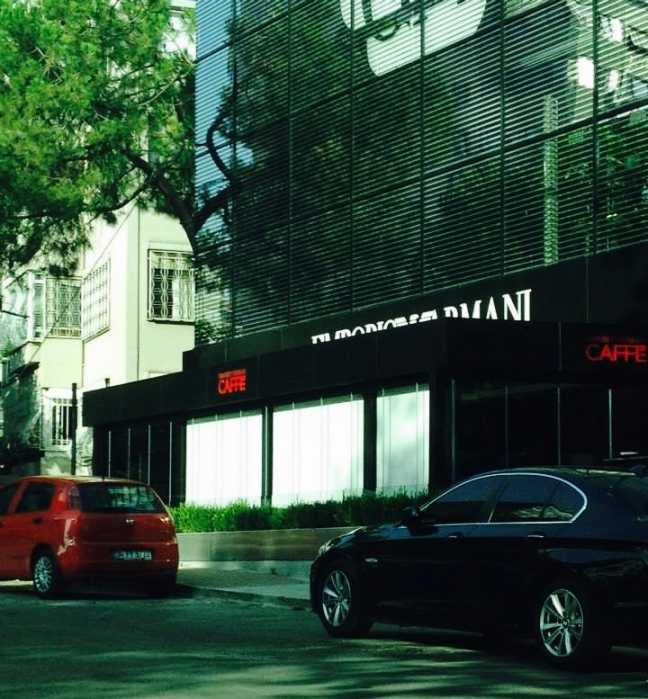(Giorgio Armani Cafe. I didn’t know M. Armani knew all about coffee and croissants!) Istanbul, Turkey
Brand saturation: When The Going Gets Greedy; how much is too much? Opinion, open to comments and suggestions and opinions! 🙂
Brand saturation. We all know it, even if we don’t realize it. This can also fall under “excessive licensing” to those who are more industry savvy. It’s a topic I find fascinating, and will be doing several posts in regards to it.
You know it. Most people think that Ralph Lauren dreamed up the exact combo of lilies and roses to make his perfume, or that he is just a jack of all trades and knows how to make a watch move. And now look, he has bed linens and plates and picnic baskets! You can go from the cradle to the grave, all day long, using Ralph Lauren.
Not so fast. It’s all licensed. It amazes me, when I bring this up to people in casual conversation, either they’re showing off their new bracelet or admiring the Dior mascara, and I remark about the profits of licensing. Really? He doesn’t design these flip flops? Sorry to burst your bubble about him being your dream guy (designer). I guess my FIT education did me some good after all.
It’s a win win. I do the work, but I get to borrow your name. You don’t do the work, but take less profit and trust me with your name. I personally feel the brand gets the better bargain, but hey, then again, the designer worked their butt off to be in the position where people would PAY them to slap John Smith on their OWN design, so I guess it all is good.
Many designers of course thus take advantage of brand licensing, but isn’t there too much of a good thing? Yes, you might get excited that your favourite designer is now making sunglasses or something of that elk that you can actually afford without surviving on stale saltines for a month, but then all of a sudden, you’re seeing his products everywhere. And I mean everywhere. People of all. It’s nice when everyone can maybe afford a taste of a designer, or is it? Personally it leaves me with a bit of a rotten taste…if everyone can have it, if it’s that accessible, why do I want it?
It’s not that you don’t want people to be able to afford things. Some people save and save to buy a designer bag that they’ve coveted for years. It harkens back to being a child on the playground. You were the first one to have red sparkly Dorothy shoes, and everyone admired them. You ruled the sandbox. But soon word of where your mom got them got out, and then there were a million little Dorothys running amok. You grew bored, and looked for the pink power ranger hi-tops as your next fave thing.
This mentality has not changed much, although instead of Payless Dorothy shoes it might be Valentino, with a 5 inch taller heel. If everyone has an item, you don’t feel unique, and in this day and age, people want to stand out, make a statement, not blend in like sheep. Sometimes you can’t help but to look similar- for example, an outfit of skinny jeans and black booties and a slouchy sweater- but you certainly don’t want to spend top dollar and the exact bag that everyone and their grandmother is carrying.
You start to question, a designer who became famous for perfect fitting blue jeans, do they REALLY know about cups and bowls? About bicycles? About stationary and pens? They start to lose your trust, as you question this superhuman ability. You see the name EVERYWHERE. It’s like your favourite record or CD- eventually you get tired of hearing “hit me baby one more time”, no matter how much you loved it.
Often, the brand loses sight of their original mission, their 20/20 vision becoming as blurred as a 92 year olds. They lose focus on what made them famous. Weren’t they all about the fit of flares, not health food!? So you’ll move on, to greener, un-mowed pastures, forgetting all about your once beloved, coveted item.
Or, you just go to www.etsy.com/shop/japonicanyc to buy unique, vintage porcelain tableware that I can’t find anywhere else!
Next up: branding in the sense of basic; to wear it or not to wear it (because everyone else is) how to determine


